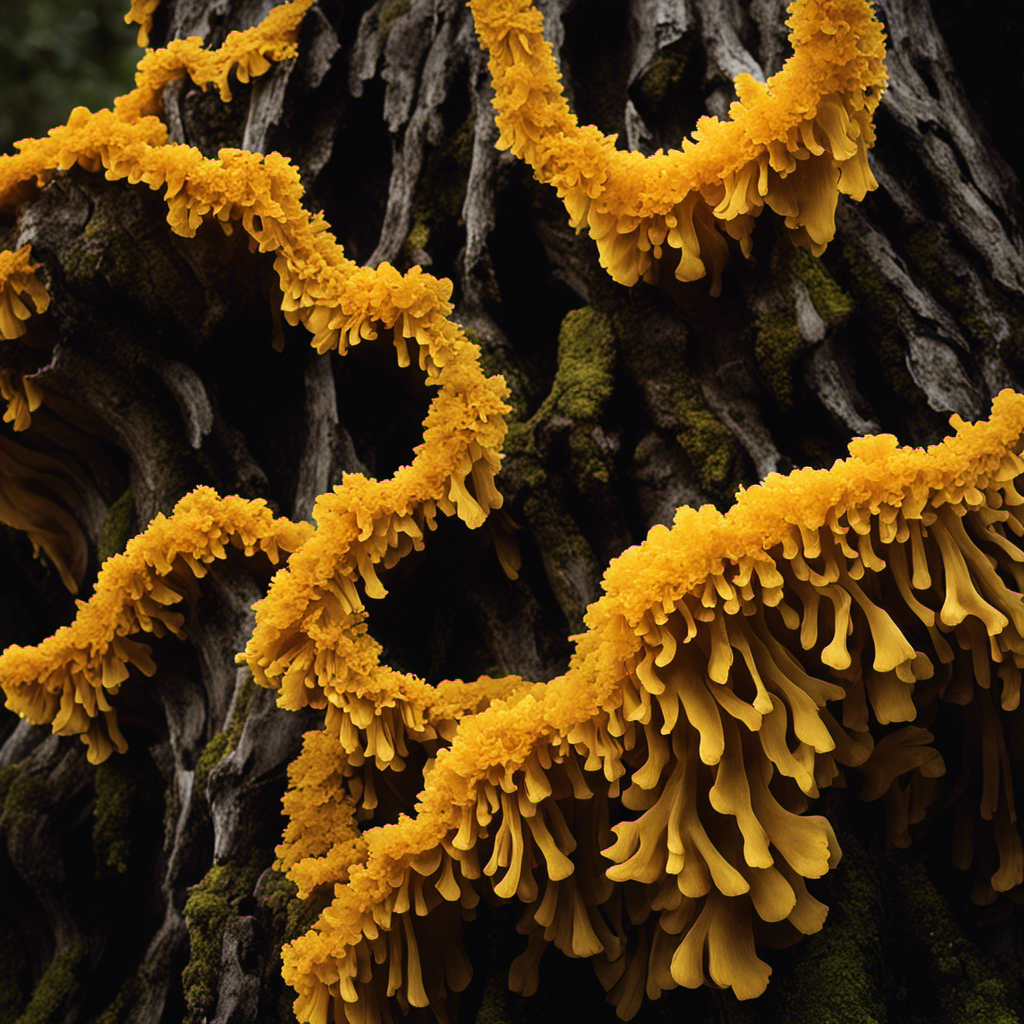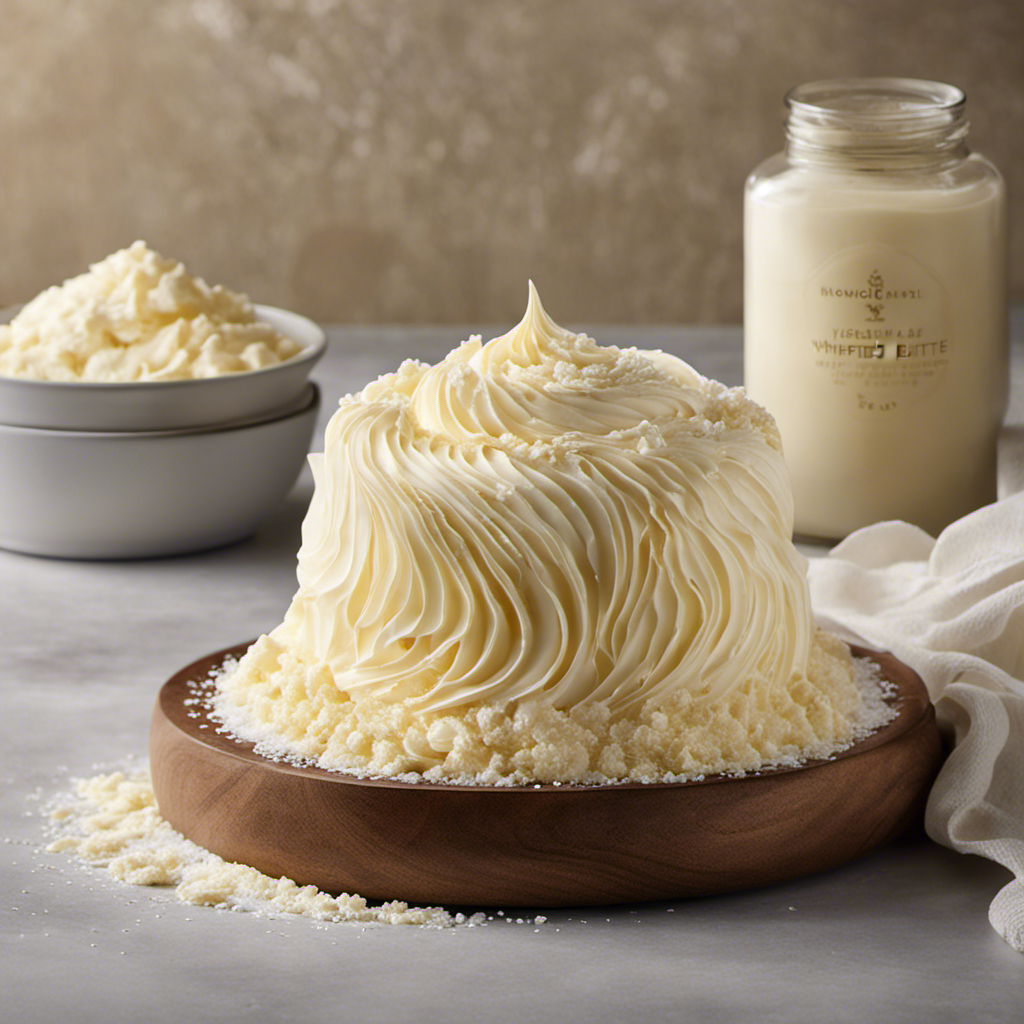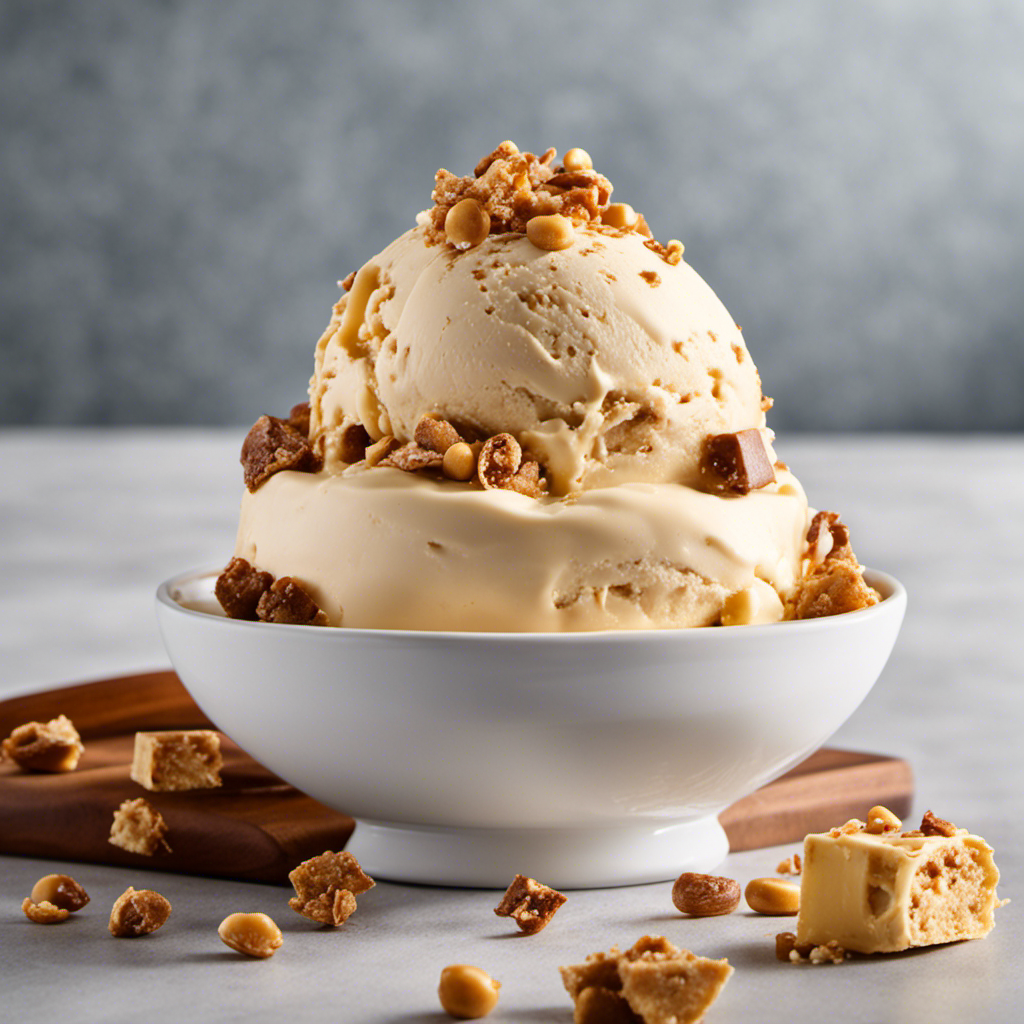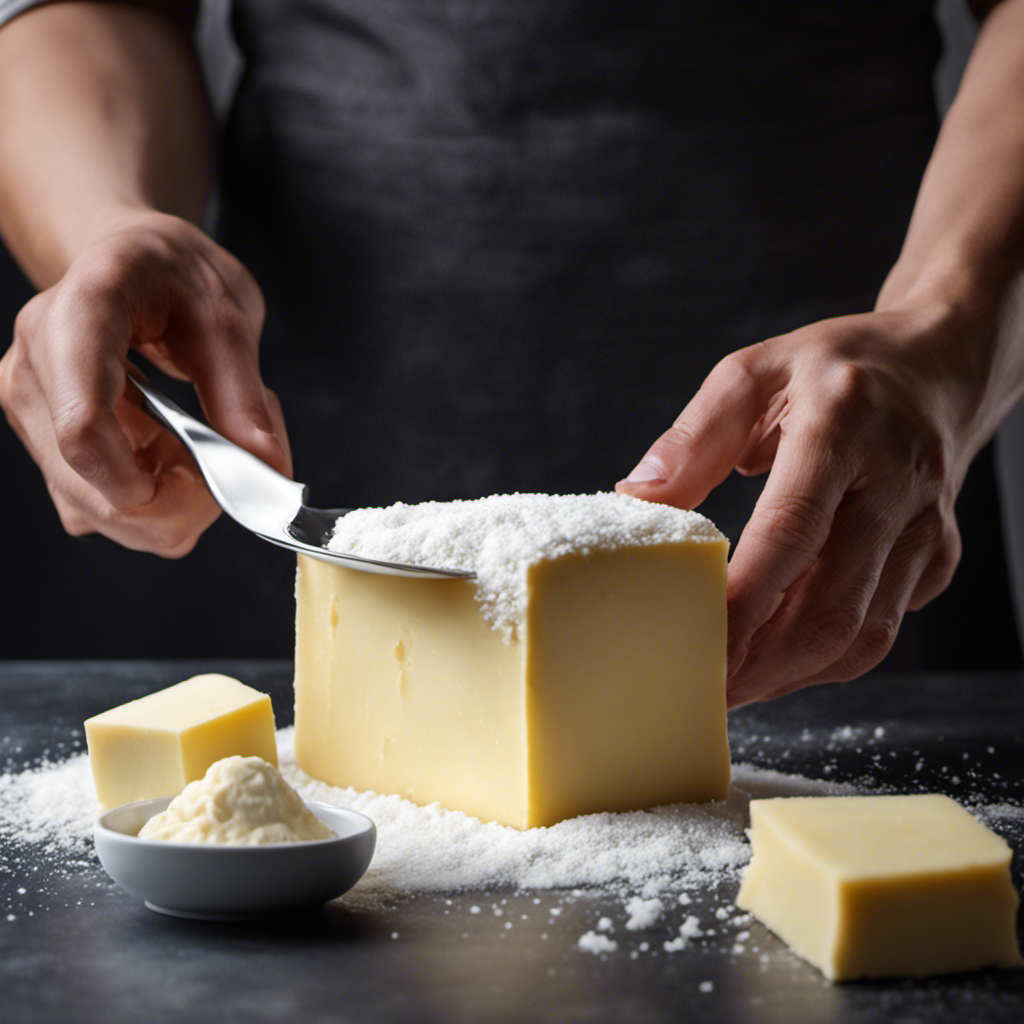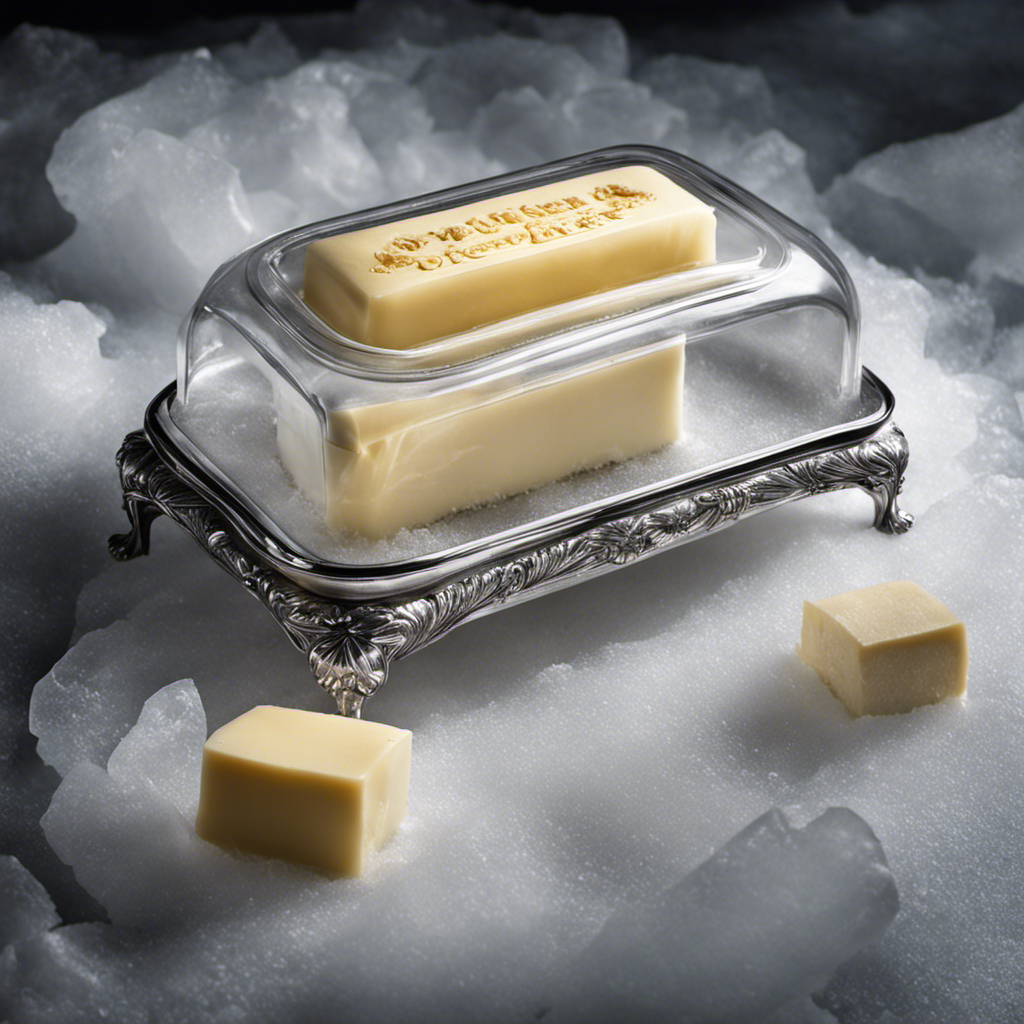Did you know that witches butter, also known as Tremella mesenterica, has a fascinating history rooted in both folklore and witchcraft practices?
In this article, I will explore the myth and legend surrounding witches butter, its distinctive appearance and characteristics, as well as its culinary and medicinal uses.
Additionally, we will delve into where to find witches butter in nature and discuss its safety for consumption.
Join me on this journey to uncover the ecological importance of this intriguing organism.
Key Takeaways
- Witches butter has a long history of myths and beliefs attached to it, being considered a key ingredient in spells and potions.
- It is associated with witchcraft and mystical practices, providing insights into cultural and historical context.
- Witches butter is bright yellow in color with a jelly-like texture, found on decaying wood in damp and humid environments.
- It holds significant cultural and folklore significance, being associated with magical properties and used in rituals and spells to enhance power.
The Myth and Legend Surrounding Witches Butter
The myth and legend surrounding witches’ butter has been passed down through generations. This peculiar fungus, scientifically known as Tremella mesenterica, has a long history of myths and beliefs attached to it.
Its historical origins can be traced back to ancient times when witches were believed to possess magical powers. According to these myths, witches’ butter was considered a key ingredient in their spells and potions. It was believed to bring good luck, ward off evil spirits, and even cure diseases.
The historical origins of these beliefs can be found in folklore and ancient texts, where witches’ butter was often associated with witchcraft and mystical practices. Although these beliefs may seem irrational to us today, they provide insights into the cultural and historical context in which witches’ butter was perceived.
Identifying Witches Butter: Appearance and Characteristics
To identify witches butter, you can notice its bright yellow color and jelly-like texture. It has distinct characteristics that make it stand out in nature. Its appearance is often described as slimy and gelatinous, resembling a blob or a small cushion. The texture is soft and wobbly, similar to a gel or pudding.
Witches butter is often found growing on decaying wood, such as fallen trees or stumps, and can be seen in damp and humid environments. While it may have a mythical reputation, witches butter does not possess any magical properties or play a significant role in witchcraft. However, it does have some culinary and medicinal uses.
In folklore, witches butter has been associated with witches and their spells, adding to its cultural significance. Transitioning into the next section, let’s delve into the role of witches butter in folklore and witchcraft.
The Role of Witches Butter in Folklore and Witchcraft
Witches butter, also known as Tremella mesenterica, holds a significant place in various cultures and folklore. Its gelatinous and vibrant yellow appearance has been associated with magical properties and used in traditional witchcraft practices.
Exploring the cultural significance and magical properties of witches butter can provide insights into the beliefs and practices of different societies throughout history.
Cultural Significance of Witches Butter
Despite its strange appearance, witches’ butter holds cultural significance in various traditions and folklore.
This gelatinous fungus, scientifically known as Tremella mesenterica, has been associated with magic and witchcraft for centuries. In many cultures, it is believed that witches’ butter possesses mystical and magical properties. It is often used in rituals and spells, believed to enhance the power of the practitioner. Its unique texture and vibrant yellow-orange color make it a symbol of transformation and vitality.
In some folklore, witches’ butter is thought to be the product of witches’ milk, a substance said to be secreted from a witch’s breasts during the night. These cultural beliefs have contributed to the enduring fascination and reverence for witches’ butter in various magical traditions.
Now, let’s explore the magical properties of witches’ butter.
Magical Properties of Witches Butter
Believed to possess mystical properties, witches’ butter is often used in rituals and spells to enhance the power of the practitioner. It is said to have magical properties that can bring luck, protection, and love to those who use it. This unique fungus is not only valued for its spiritual significance, but it also holds ecological importance.
Here are some key reasons why witches’ butter is cherished:
- It plays a vital role in the decomposition of dead plant material, helping to recycle nutrients back into the ecosystem.
- Witches’ butter provides shelter and food for various insects and small animals, contributing to the biodiversity of the environment.
- Its gelatinous texture helps retain moisture, preventing soil erosion and maintaining a healthy soil structure.
- The bright yellow color of witches’ butter adds a touch of beauty to the natural landscape, uplifting the spirits of those who encounter it.
- Used in traditional medicine, witches’ butter is believed to possess healing properties, providing relief from various ailments.
Witches Butter: A Culinary and Medicinal Ingredient
In this discussion, I would like to explore the culinary uses and medicinal properties of witches butter.
Witches butter, also known scientifically as Tremella mesenterica, is a gelatinous fungus that is often found growing on decaying wood. Despite its unappealing appearance, witches butter has a long history of being used in both culinary and medicinal practices.
Culinary Uses of Witches Butter
You can use witches butter to add a unique and flavorful touch to your culinary creations. It has a rich, earthy taste that can enhance both sweet and savory dishes.
Here are some culinary uses of witches butter that you might find interesting:
- Sprinkle it over roasted vegetables for a delicious umami flavor.
- Use it as a topping for soups or stews to add richness and depth.
- Incorporate it into sauces or dressings for a unique twist.
- Mix it with butter and herbs to create a savory spread for bread or crackers.
- Add it to your favorite pasta dish for an extra burst of flavor.
Not only does witches butter elevate the taste of your dishes, but it also offers several health benefits. It is a good source of vitamins and minerals, and it has anti-inflammatory properties.
Medicinal Properties of Witches Butter
The medicinal properties of witches butter are still being studied, but it has shown potential in reducing inflammation and promoting overall health.
Witches butter, also known as Tremella mesenterica, has been used in traditional remedies for centuries due to its various health benefits. It is believed to have anti-inflammatory properties, which can help alleviate symptoms of arthritis and other inflammatory conditions.
Additionally, witches butter is rich in antioxidants, which can protect the body against free radicals and promote a healthy immune system. Some studies have also suggested that it may have antiviral and anti-tumor effects, although more research is needed to fully understand its potential.
Overall, witches butter is an intriguing natural remedy that holds promise in the field of medicinal uses.
Where to Find Witches Butter in Nature
When searching for witches butter in nature, it’s important to look for damp and decaying logs or branches. This peculiar fungus, also known as Tremella mesenterica, has specific habitat preferences and seasonal variations. Here are some key points to consider:
- Witches butter thrives in moist environments, making damp logs or branches its ideal habitat.
- It can be found in forests, woodlands, and even in your own backyard.
- This fungus prefers cooler temperatures, so you’re more likely to spot it during the fall and winter months.
- Its vibrant yellow or orange color stands out against the dark background, catching your eye.
- The gelatinous texture and wobbly appearance evoke a sense of curiosity and fascination.
Now that we know where to find witches butter, let’s explore whether it’s safe to touch or consume.
Witches Butter: Is It Safe to Touch or Consume
Now that we’ve located where to find witches butter, it’s important to determine if it’s safe to touch or consume.
Witches butter, also known as Tremella mesenterica, has been used for its health benefits and in historical practices. However, it is crucial to exercise caution when handling or ingesting this fungus.
While witches butter is generally considered non-toxic, it is not recommended for consumption due to its gelatinous texture and lack of nutritional value. Additionally, some individuals may have allergies or sensitivities to certain fungi, so it’s best to avoid contact if you have any concerns.
Understanding the ecological importance of witches butter will shed light on its role in the ecosystem and further highlight the need for preservation and conservation efforts.
Understanding the Ecological Importance of Witches Butter
Understanding the ecological importance of Tremella mesenterica helps us appreciate its role in the ecosystem and the need for preservation and conservation efforts. This fascinating fungus serves several ecological benefits, which are crucial for maintaining a healthy environment:
- Helps decompose dead plant material, recycling nutrients back into the soil.
- Provides a food source for insects, birds, and small mammals, contributing to the overall biodiversity of the ecosystem.
- Assists in soil stabilization, preventing erosion and maintaining the integrity of the landscape.
- Plays a role in the carbon cycle by absorbing carbon dioxide and releasing oxygen during its growth.
- Acts as an indicator species, signaling the health of the surrounding ecosystem.
Recognizing the ecological role of Tremella mesenterica highlights the importance of protecting this species and its habitat to ensure a balanced and thriving ecosystem for future generations.
Frequently Asked Questions
Can Witches Butter Be Used in Cooking or as a Medicinal Ingredient?
Yes, witches butter can be used in cooking and has potential health benefits. It adds a unique texture and flavor to dishes. It is also believed to have medicinal properties, such as boosting immunity and aiding digestion.
Where Can Witches Butter Be Commonly Found in Nature?
In nature, witches butter can be commonly found in shady, damp habitats like forests and wetlands. Its identifying features include a gelatinous texture and a vibrant yellow or orange color. It’s a fascinating sight!
Is Witches Butter Safe to Touch or Consume?
As for the safety of touching or consuming witches butter, it’s important to exercise caution. While there are potential health benefits to consuming it, there are also precautions to consider, as well as potential side effects.
What Is the Ecological Importance of Witches Butter?
The ecological role of Witches Butter is vital as it supports biodiversity. Its presence enhances the delicate balance of nature, acting as a nourishing source for various organisms. Its importance cannot be understated.
What Are the Myths and Legends Surrounding Witches Butter?
Myths and legends surrounding witches butter are fascinating. Folklore often portrays it as a symbol of magic and witchcraft. These stories have sparked curiosity and intrigue throughout history, adding to the allure of this mysterious fungus.
Conclusion
In conclusion, witches butter is a fascinating and versatile fungus that has captivated people’s imaginations for centuries. Its unique appearance and characteristics make it easily identifiable in nature, and its role in folklore and witchcraft adds to its mystique.
Interestingly, studies have shown that witches butter contains a high concentration of antioxidants, making it a potentially beneficial ingredient in both culinary and medicinal applications. While it is safe to touch and consume, it’s always important to exercise caution when foraging for any wild mushrooms.
Understanding the ecological importance of witches butter further highlights its value in the natural world.
